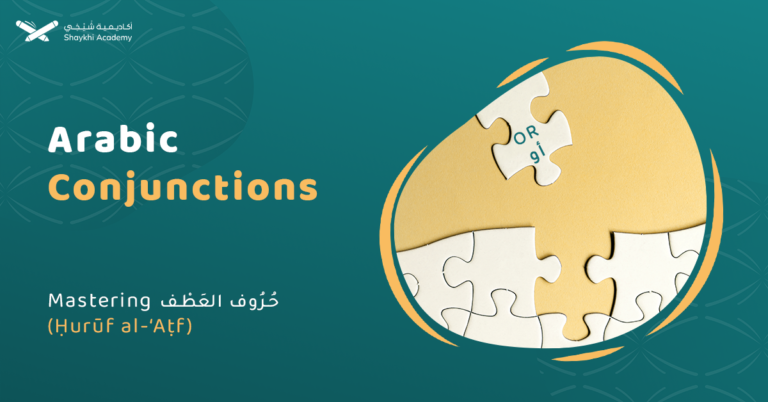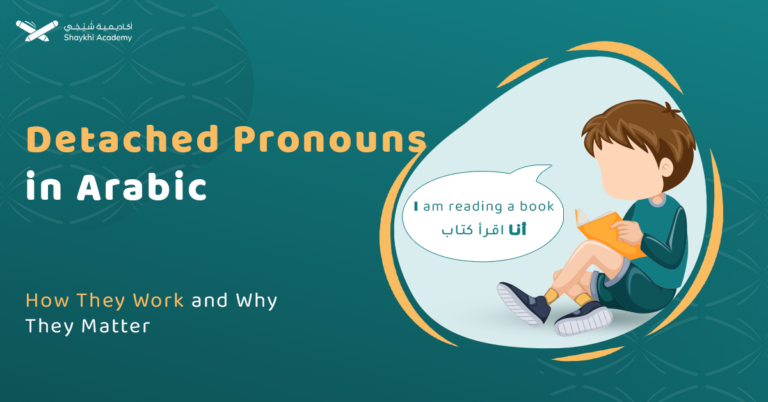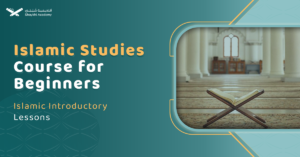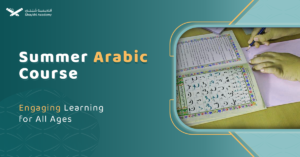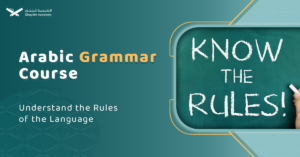In Tajweed Warsh, recitations start with Al-Basmalah except for Surah Al-Tawba, using various transitions between surahs. Connected and Disconnected Madd, and the word “أنا” when followed by a hamza with a fatha or dammah, are elongated for six counts. Plural “mim” elongates similarly when followed by hamza al-qata.
In this article, we will explain some rules of Tajweed Warsh. Before that, it’s important to understand the meaning of Qiraat (types of Quranic recitation).
Definition of Qiraat (types of Quranic recitation)
Qiraat is a plural noun; the singular form is “qiraa” which means “the method by which we recite the Quran.”
There are 10 styles of Quranic recitation according to different narrators. Sometimes, these styles are categorized as seven recitation styles called “ahrof” or “qiraat”.
The most famous qiraat are Warsh and Hafs, who transmitted the recitation of the Quran to us as it was revealed to the Prophet Mohammed, peace be upon him.
Rules of Tajweed Warsh
The main rules of Tajweed Warsh include starting recitations with Al-Basmalah, except for Surah Al-Tawba, and following specific sub-rules for transitioning between surahs.
The rules also cover the Connected and Disconnected Madd, both elongated to six counts, and special cases for Madd in the word (أنا) when followed by a hamza with a fatha or dammah.
Additionally, the plural “mim” is elongated for six counts when followed by a hamza al-qata.
Rule 1: Al-Basmalah
Al-Basmalah refers to the phrase
(بِسْمِ ٱللَّهِ ٱلرَّحْمَٰنِ ٱلرَّحِيمِ)
which means
“In the name of Allah, the Entirely Merciful, the Especially Merciful.”
We begin recitation with Al-Basmalah or before reading any surah, except for Surah Al-Tawba.
When reciting according to the Warsh narration and joining the end of one surah with the beginning of the next, there are three sub-rules to follow:
1- Pausing between Two Surahs Without Basmalah(Sakt)
This means pausing without taking a breath between reciting the last ayah of the first surah and the first ayah of the following surah.
This is the preferred way in Warsh recitation.
2- Connecting Two Surahs Without Basmalah(Wasl)
Recite the last ayah of the first surah and connect it directly to the first ayah of the following surah without pausing and without reciting Al-Basmalah.
For example, reading the last ayah of Surah Al-Falaq
(وَمِن شَرِّ حَاسِدٍ إِذَا حَسَدَ)
followed by the first ayah of Surah Al-Nas
(قُلۡ أَعُوذُ بِرَبِّ ٱلنَّاس)
without Basmalah and without pausing between the two surahs.
3- Connecting Two Surahs With Basmalah
This method involves finishing the first surah and then starting the second surah with Al-Basmalah. It is important to ensure that the last ayah of the first surah is not connected directly to the Basmalah; instead, the Basmalah should be read separately before beginning the second surah.
Rule 2: The Connected and The Disconnected Madd
Connected Madd means (Madd Motasel) and Disconnected Madd means (Madd Munfasil), and both take 6 counts.
Example 1: In the ayah
(إِذَا جَاءَ نَصْرُ اللَّهِ وَالْفَتْحُ)
the word (جَاءَ) contains the letter (ا) pronounced as alef, acting as a Madd letter. The Madd (elongation) will be 6 counts, and this type of Madd is called Connected Madd because the hamza (ء) and (ا) are combined in the same word.
Example 2: In the ayah
(قُلْ يَا أَيُّهَا الْكَافِرُونَ)
the word (يَا) contains the letter (ا) pronounced as alef, acting as a Madd letter. The Madd (elongation) will be 6 counts, and this type of Madd is called Disconnected Madd because the hamza (ء) comes after (ا) in a new word.
Rule 3: The Madd in the word (أنا)
The word (أنا) means “I am.” In Warsh recitation, when the word (أنا) is followed by a hamza (ء) in a new word, the Madd letter (ا) is elongated to six counts if the hamza in the new word has a fatha or a dammah.
Example 1: In the ayah
(وَأَنَا أَوَّلُ الْمُسْلِمِينَ)
the hamza in the word (أَوَّلُ) has a fatha and it comes after the word (أَنَا), so the Madd counts will be 6 counts.
Example 2: In the ayah
(قَالَ أَنَا أُحْيِي وَأُمِيتُ)
the hamza in the word (أُحْيِي) has a dammah and it comes after the word (أَنَا), so the Madd counts will be 6 counts.
It’s important to note that if the hamza comes with a kasrah after the word (أنا), there is no Madd.
Example: In the ayah
(إِنْ أَنَا إِلَّا نَذِيرٌ مُّبِينٌ)
the hamza in the word (إِلَّا) has a kasrah after the word (أَنَا), so there is no Madd in this case.
Rule 4: The Extension of A Plural Mim
The plural “mim” refers to when the letter (م), pronounced as “mim,” appears in a word indicating plurality, such as (عَلَيۡكُم) or (عَلَيۡهِم).
When followed by a word that begins with a hamza al-qata (cutting hamza), the letter mim is pronounced with a dammah and elongated for six counts during recitation.
Example: In the ayah (لِيَبۡلُوَكُمۡ أَيُّكُمۡ), the hamza al-qata appears as the first letter of the word following a plural mim, so the letter mim (م) will be pronounced with a dammah and elongated for six counts.
You can enhance your understanding of Tajweed Warsh rules and perfect your recitation by joining Shaykhi Academy.
How to learn Tajweed Warsh
Learning Tajweed Warsh is essential for accurate and beautiful Quranic recitation. Follow these steps to master the rules and enhance your recitation skills effectively:
1- Practice regularly
By practicing recitation with the guidance of a professional teacher, such as those at Shaykhi Academy, you will enhance your recitation skills and master the rules of Tajweed Warsh.
2- Apply what you learn
After mastering the rules of Tajweed Warsh, focus on identifying and applying these rules during your Quran recitation. Pay attention to examples that illustrate Warsh rules and practice reciting them as you’ve learned.
3- Seek feedback
Seek feedback from your guide or teacher to correct your recitation and address any mistakes. To ensure you are reading correctly, you can easily find such guidance by joining Shaykhi Academy.
Unlock the Path to Quranic Mastery with Shaykhi Academy!
Are you seeking the finest Quranic education right from the comfort of your home? Look no further! Shaykhi Academy stands out as a premier online Quran learning platform, dedicated to providing exemplary education to both children and adults.
Why Choose Shaykhi Academy?
- Connect with highly qualified native tutors.
- Flexible scheduling to suit your busy lifestyle.
- Affordable classes tailored for all levels.
- Accessible from anywhere around the globe.
Discover Our Range of Courses:
- Arabic Noorani Qaida: Lay a solid foundation for Quranic studies.
- Online Quran Classes for Kids: Engaging lessons for lifelong learning.
- Tajweed Rules for Kids: Learn to recite with confidence.
- Quran Hifz for Kids: Step-by-step guidance to memorize the Quran.
- Quran for Adults: Introduce yourself to Quran reading and Tajweed rules.
- Online Arabic Courses: Master the language of the Quran.
- Islamic Studies: A wide range of topics related to Islam, including theology, law, Quranic studies, and Hadith.
Don’t Miss Out on Your Chance to Excel!
Whether you’re a beginner or seeking advanced knowledge, Shaykhi Academy can guide you! Book your free trial now!
Conclusion
There are ten styles of reciting the Quran, each passed down from different narrators. The most widely recognized recitations are those of Warsh and Hafs, who transmitted the Prophet Muhammad’s (peace be upon him) recitation of the Quran as it was revealed to him.
In this explanation, we focused on some Tajweed rules specific to Warsh’s recitation. The first rule concerns Al-Basmalah (بِسْمِ اللهِ الرَّحْمَنِ الرَّحِيمِ). In Warsh’s recitation, Al-Basmalah is recited at the beginning of every Surah except Surah At-Tawba.
We then discussed three situations for pausing between Surahs: pausing without reciting Al-Basmalah (Sakt), connecting Surahs without Al-Basmalah (Wasl), and connecting Surahs with Al-Basmalah.
Next, we covered the concepts of Connected Madd (Madd Mutasel) and Disconnected Madd (Madd Munfasil). Both types of Madd last for six counts.
We also explained the special case of the Madd in the word “Ana” (أنا) when followed by a word starting with a cutting Hamza (ء). In this situation, the “Alef” (ا) in “Ana” is lengthened for six counts if the Hamza has a Fathah or Dammah.However, there is no Madd if the Hamza has a Kasrah.
Finally, we explored the rule for a plural Mim followed by a word starting with a cutting Hamza. In Warsh’s recitation, the Mim is pronounced with a Dammah and lengthened for six counts.


